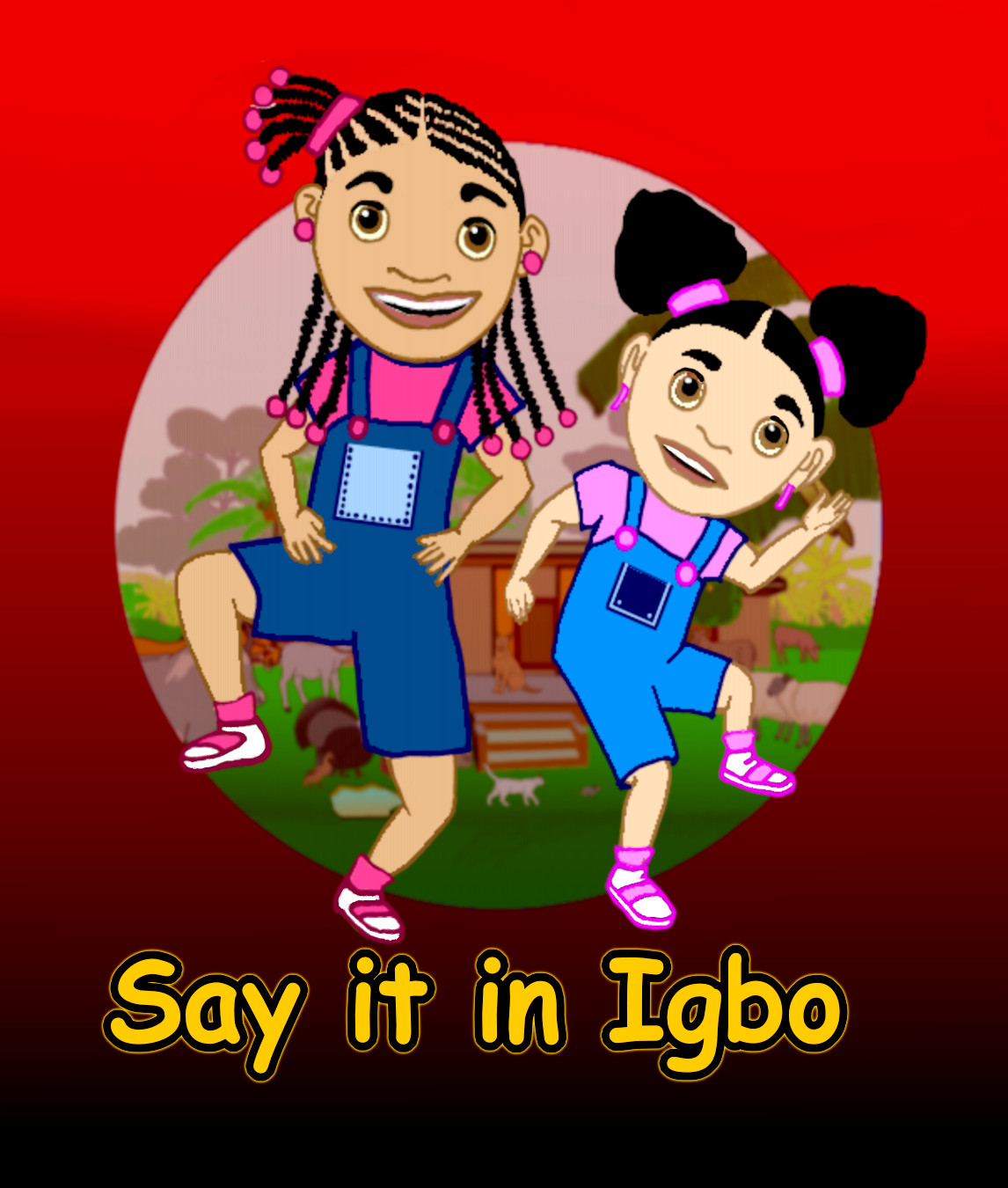
Say it in Igbo
www.sayitinigbo.com
Applying research insights to solve my pain points and design Igbo language primers.
The Story
Say it in Igbo, is an Igbo language primer series, designed for children of Igbo families living abroad. Igbo language is spoken in South East Nigeria and formerly classified as an endangered language by UNESCO.
My first child was learning to speak and she spoke bits of several languages but not Igbo, my native language. Available Igbo language materials at that time, were not suitable for children growing up abroad.
It raised the question 'How might children growing up in a non-Igbo culture learn the to speak Igbo language?
Strategy
Leveraged the Stanford d.School design thinking model as follows:
Empathize
From my personal experience of raising children abroad, I could empathise with Igbo families abroad seeking Igbo language resources for children
Define
From research,
I was able to further define the problem and identify key pain points
Ideate
I brainstormed with my co-creator to generate the Minimum Viable Product idea
Prototype
I created the first prototype of the MVP.
Several other low fi and high fi prototypes where created by my husband
Test
Ongoing user testing and refinement
Empathy
Frustrated by the lack of suitable materials for children growing up in non-Igbo cultures, I worked with my husband to create Igbo learning resources for our children.
We eventually decided to provide the same materials to other parents facing similar challenges around the world. At the early stages of the product design, two primary users were identified:
Parents who want their children to learn Igbo language.
The child in early stages of speech development.
Over time, two other categories of users in non-Igbo cultures were identified as follows:
Older children of Igbo families living abroad.
Adults members of Igbo families abroad for instance, adult children and non-Igbo spouses/partners who want to learn the language.
The four groups of users are represented by the personas below.

Emeka
36 year old Engineer, living in Houston, Texas. He is married with two children. Wants his children to learn to speak Igbo but can't find relevant learning resources.
"I wish I could find Igbo language materials that my children can use to learn to speak my native language."

Ada
2.5 year old girl, living with her parents in Leeds, England. She is learning to speak. She says some English words and some Spanish words picked up from Dora the Explorer, but does not say any Igbo words.

Chima
16 year old high school student, living with his parents in Netherlands.
"I'm fluent in English and Dutch but I would really like to learn to speak Igbo. I've seen Igbo language books online but how do I know the correct pronunciations?"

Sarah
27 year old grade school school teacher, married to Ikenna, a University Professor, in Queensland Australia.
"I would really love to learn how to speak Igbo my husband's language."
Below is a review from a user in Germany, 2 years after the first volume was published.
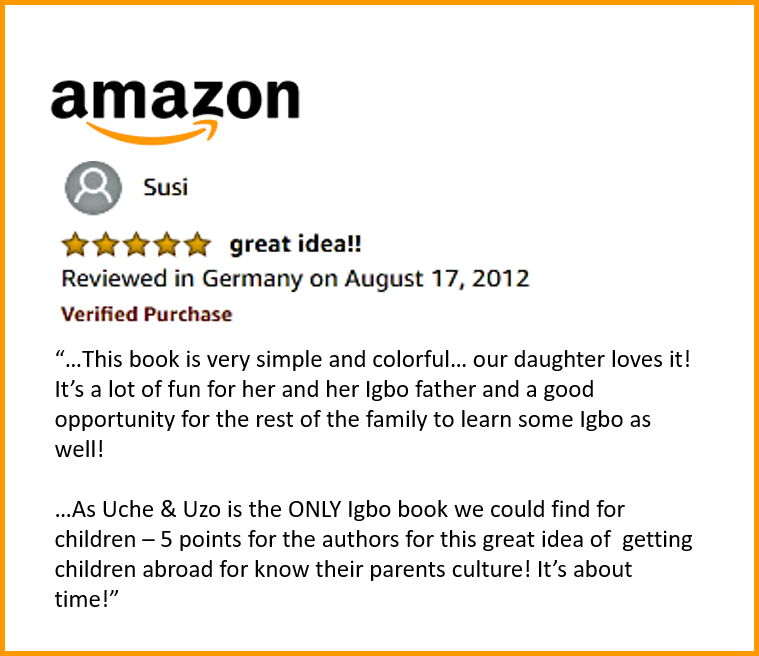
"As Uche and Uzo is the only Igbo book we could find for our children - 5 points for the authors for this great idea of getting children abroad to know their parents culture! It's about time"
Problem Definition
Research Methods
Several research methods were applied to collect information about user needs and pain points. They are as follows:
Contextual inquiry: Observed in context how my children learned to speak and how they interacted with other non-Igbo childhood learning materials (pictures were not included for privacy purposes).
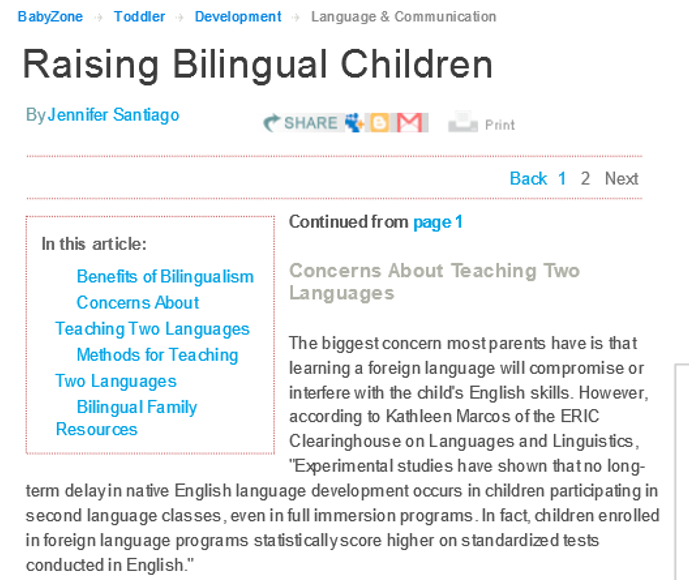
Secondary research: Reviewed literature and audiovisual materials of how children learn and how children learn languages.
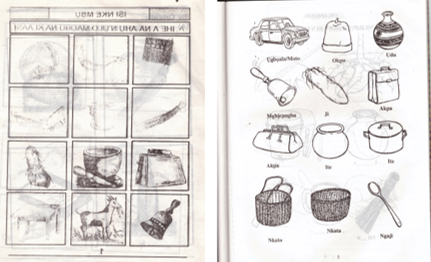
Competitor analysis: Analyzed available Igbo language books for children, sourced from Nigeria.
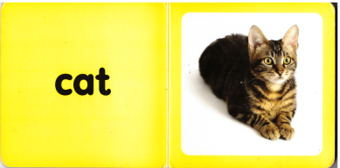
Feature analysis: Analyzed the layout, content, progression and logic of interaction of other early childhood learning materials.
Findings
How children learn to speak: Children learn to speak by copying what others say e.g. parents, care providers, other children, characters on TV etc.
Features of other early learning resources: Children’s early learning resources had books with bright colors, one picture per page and minimal writing, coloring/ activity books, and cartoon characters.
Pain points in existing Igbo language resources:
Absence of colorful pictures.
Lack of pronunciation aids.
Poor quality of prints.
Few pictures of familiar objects.
Lack of availability through online channels.
MVP Ideation

Ideation was in 6 main parts:
Product idea: Minimum Viable Products of brightly colored picture books, activity books and companion DVDs with key characters. This provides different levels of engagement to users.
Picture Book content: We brainstormed on learning approaches, themes, the depth of information to include and the translation approach.
Activity book: We brainstormed on types of activity to include
The videos: We brainstormed on the approach to use for the videos. We decided to use total immersion approach that is spoken Igbo only without subtitles.
The Logo: We brainstormed on various iterations of logo designs
Character idea: We brainstormed about
The type of character: human or animal (think Dora vs Nemo). We chose human characters.
The number of characters: One or more. We decided to create characters after our children … at the time we were just designing for family.
The names: Igbo names vs non-Igbo names. We decided to use Igbo names, one of which would have letters specific to the Igbo alphabet.
The appearance: hairstyle and clothing
Prototyping
I developed the first product prototype using MS Power Point.
I also hand sketched various hairstyles for the characters
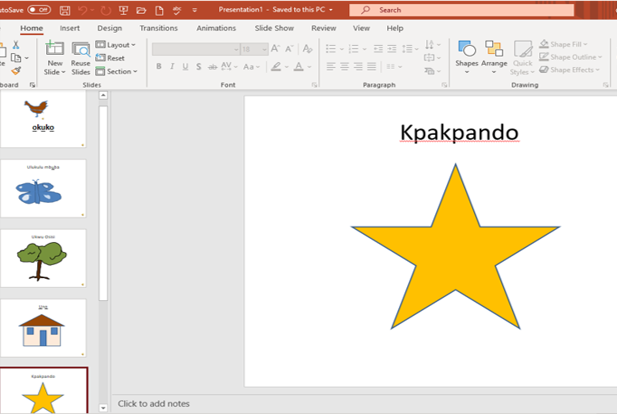
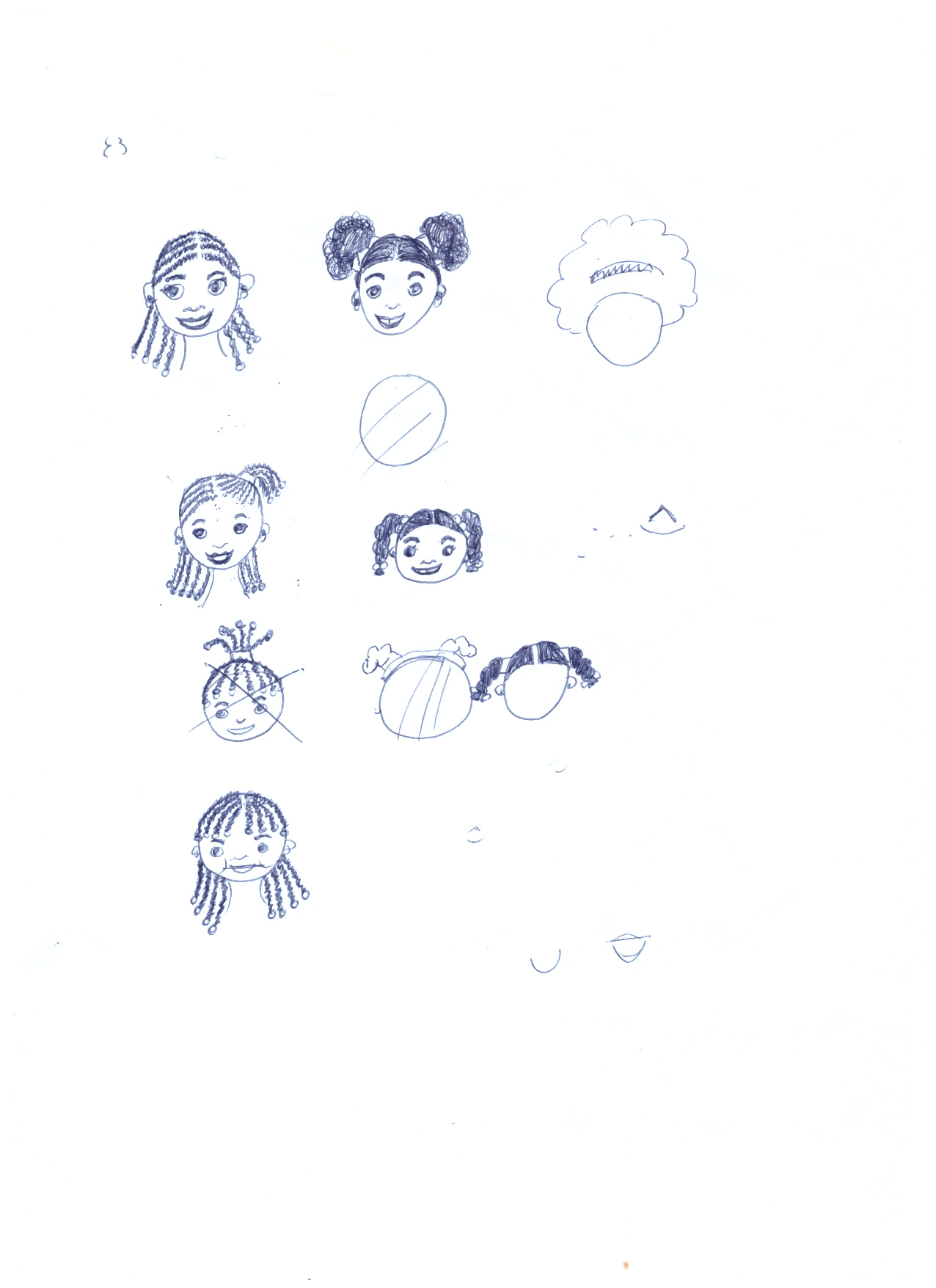
Testing & Feedback
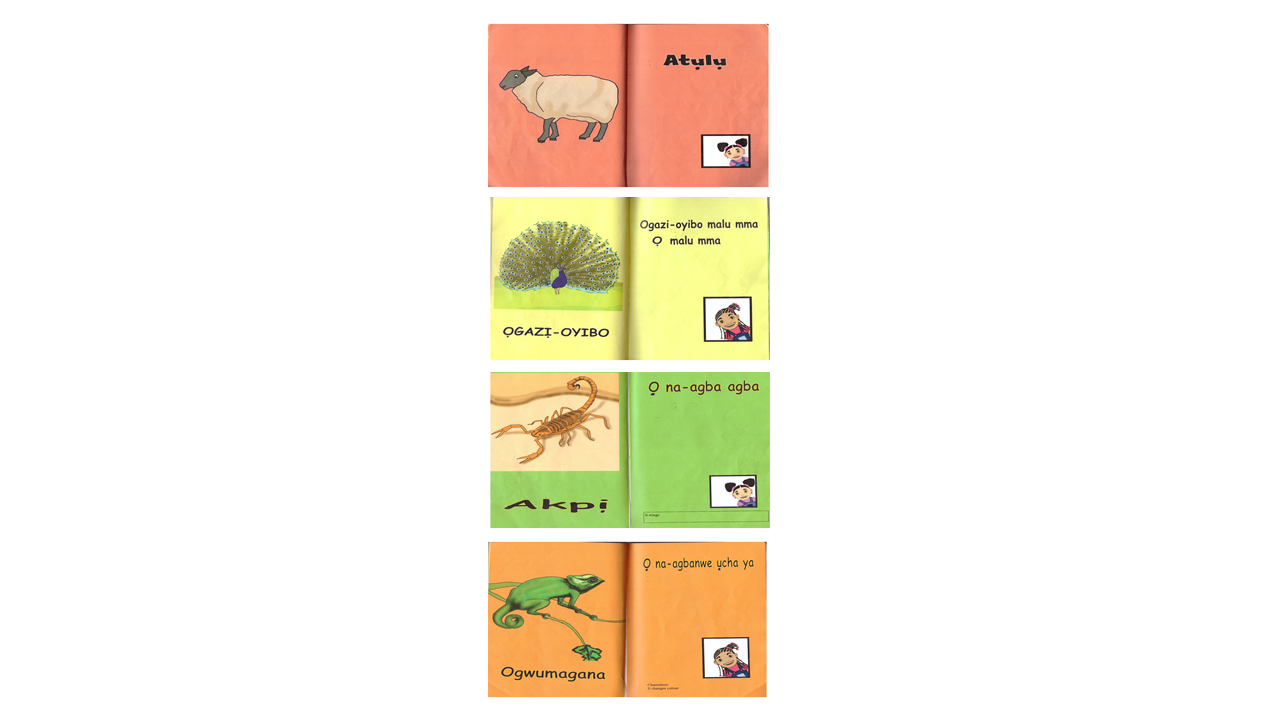
Ongoing feedback from user testing, online user reviews, Facebook comments, emails and conversations is used to constantly improve the user experience.
For instance:
For picture books (see pictures to the left):
volume 1 has one picture and one word in Igbo.
Volumes 2-4 have a picture, the Igbo name of and a sentence in Igbo.
Volumes 5-8 have a picture, the Igbo name, a sentence in Igbo and an interpretation of the sentence in English.
Volumes 9-11 have a picture, the Igbo name, a sentence in Igbo and an interpretation of the name and sentence in English.
For the videos:
The first 4 volumes, the characters only said the names or sentences to in the books, giving room for repetitions
From volume 5, folk songs and original compositions related to the theme of the volume were included
Volume 11 introduced a new character and more animations
For Activity Books:
Initially there were grouped activity books: vol 1-4 and vol 5-9
Single activity for vols 1-11 were later introduced
Other Books:
Other books, introduced for older users, include a guide book a novel and two short stories
Final Products
39 titles made up of 11 picture books, 11 videos, 13 activity books, 1 handbook, 1 novel and 2 story books; available on Amazon.com and Vimeo.com; and over 1800 Facebook followers in 45 countries.
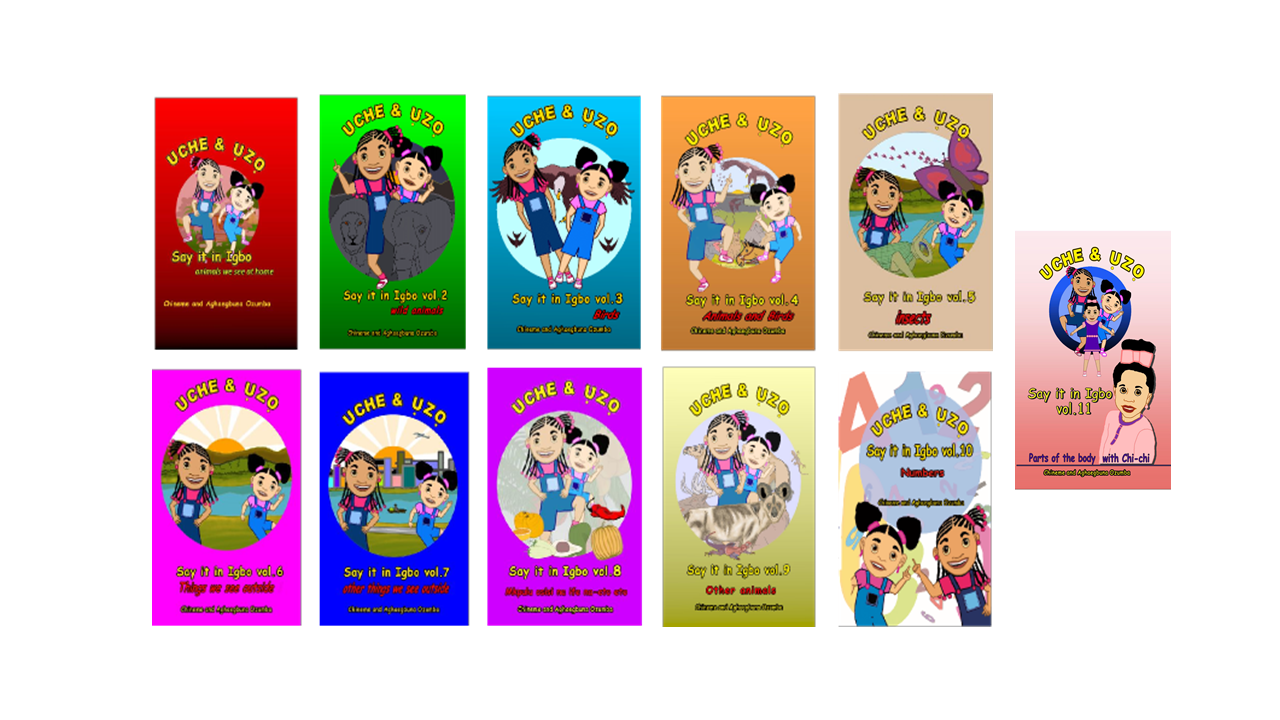
11 Picture Books
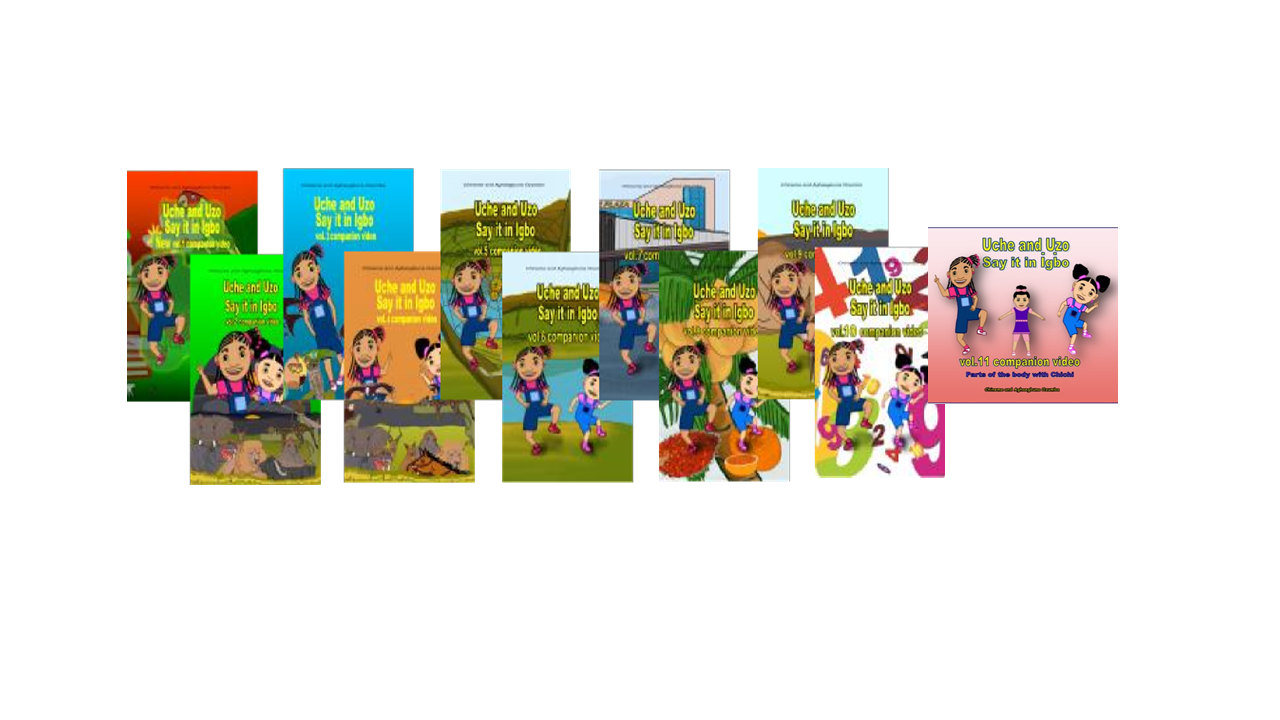
11 Companion Videos
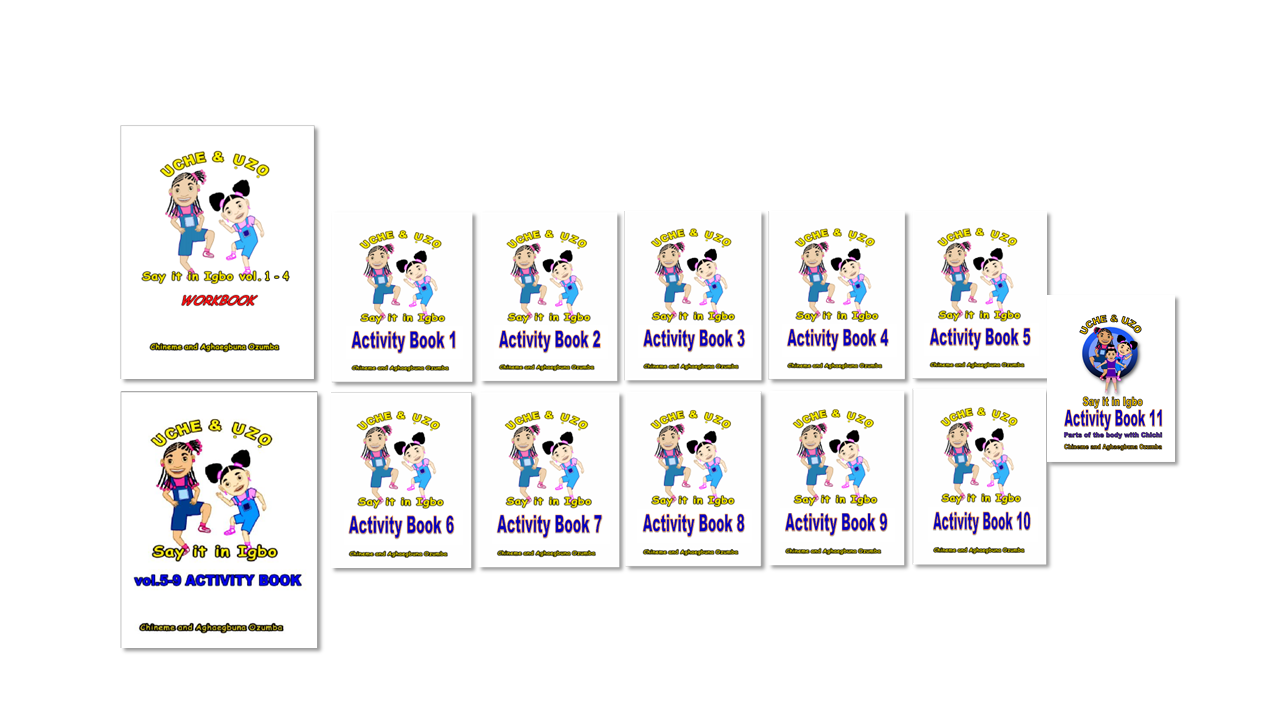
13 Activity Books
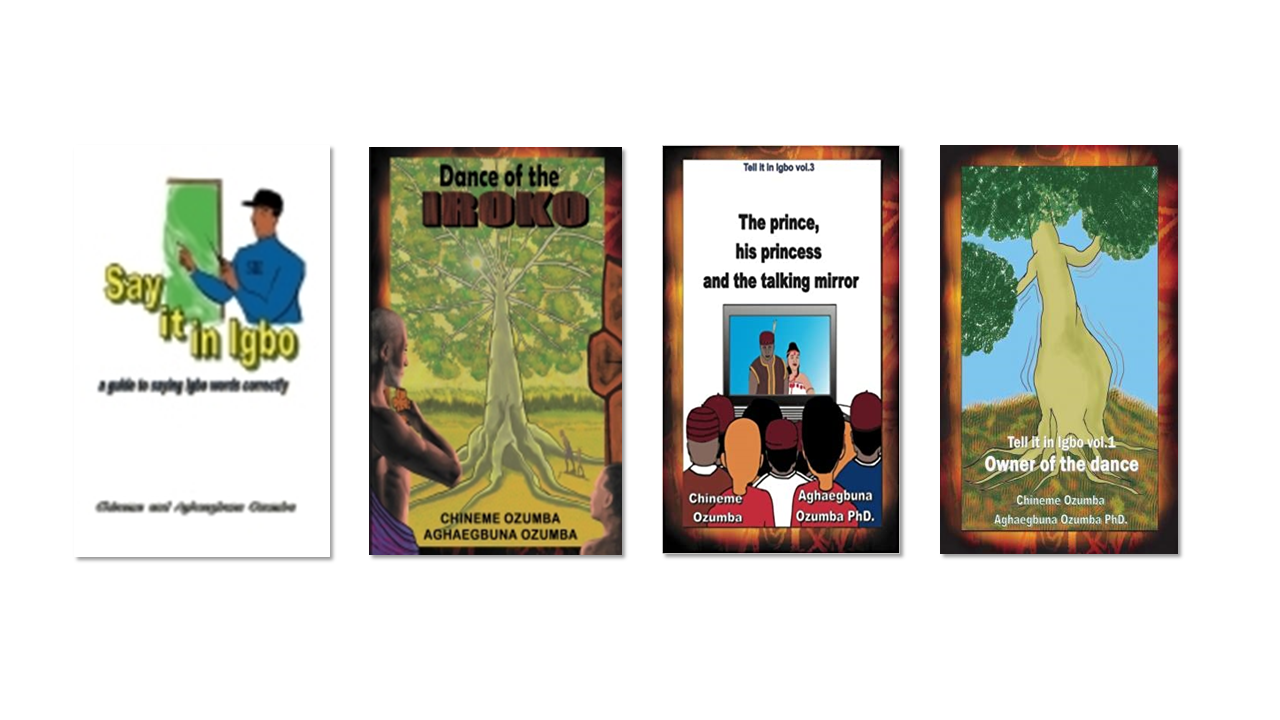
1 pronunciation guide
1 Allegorical Novel
2 short Stories
Reflections
Having worked on this product for the past 10 years, it gives me great satisfaction to receive feedback from users which show that the primers are meeting the identified needs of the target users - children of Igbo families growing up abroad.
In designing this product I realized that there different kinds of users. In this case there the children who need to learn the language and there are the parents who pay for the primers. There are also non-Igbo speaking family members of all ages, who also learn along with the children. It is necessary to recognize these groups of users in the design of the product.
Above all, through the years, I have learnt that there is always room for improvement.
The series is work in progress and user research is ongoing, for continuous enhancement of the user experience.